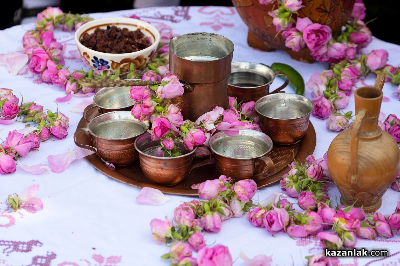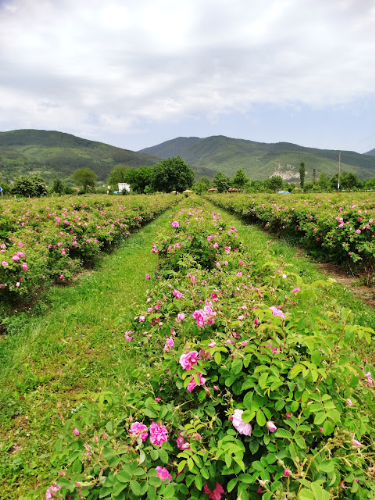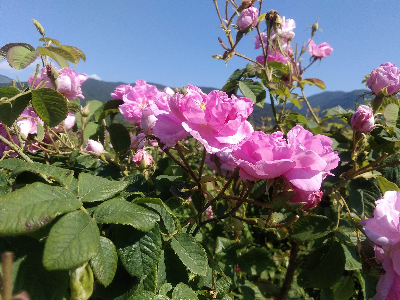
©
Виробництво троянд у Болгарії - не тільки сільське господарство та бізнес, це символ цієї південної країни, який виник тут за багато тисячоліть до нашої ери. Історичні записи свідчать про те, що троянду вирощували у фракійських землях ще з часів Одриського царства (5-3 ст. до н.е.). У місті Карлово трояндові сади описували ще з 1712 року. А через століття у місті Казанлик відкрили першу фабрику з виробництва ефірних олій. Загалом, для отримання 1 г трояндової олії, потрібно більше 1000 пелюсток троянд, зірваних вручну між 5.00 і 10.00 годинами ранку, а ніжний цвіт троянд має найвищий вміст ефірної олії близько 7-ї ранку. Ароматний урожай дотепер збирають тільки вручну: пелюстки троянд разом з чашечкою зривають кінчиками пальців. Терміни збору врожаю і тривалість цвітіння напряму залежать від кліматичних умов, які впливають на врожайність та якість трояндової олії. Трояндознавці говорять, що в недалекому майбутньому кліматичні зміни можуть змінити тривалість періоду цвітіння. Це призведе до розвитку хвороби у рослин та появи шкідників, збільшить витрати для захисту рослин. У Національній спілці виробників троянд Болгарії стурбовано говорять про аномальну спеку, як фактор несприятливий для врожаю. Адже троянда дуже вимоглива до вологості повітря, а посушливість згубно впливає на колір продукції. Найбільші трояндові ферми розташовані у Долині троянд (м. Казанлик) уздовж схилів річок Стряма і Тунджа на висоті 711 м над рівнем моря. Схили утворюють природний бар’єр, який зберігає вологу. У теплих і вологих умовах час збору врожаю значно збільшується, інколи до місяця. Натомість у дуже жаркому та сухому кліматі збір урожаю скорочується до кількох днів, що погано впливає на якість олії.
Rapid climate change could lead to the extinction of the Bulgarian rose
Rose production in Bulgaria is not only about agriculture and business, it is also a symbol of this southern country that originated in this area many millennia before Christ. Historical records show that the rose has been grown in Thracian lands since the time of the Kingdom of Odris ( V-III centuries BC). In Karlovo, rose gardens were described as early as 1712. A century later, the first factory for the production of essential oils was opened in the town of Kazanlyk. In general, to produce 1 g of rose oil, more than 1,000 rose petals are needed, picked by hand between 5.00 and 10.00 am, and the delicate rose blossom has the highest essential oil content around 7 am. The fragrant harvest is still harvested only by hand: the rose petals are plucked together with the calyx with the tips of your fingers. The timing of harvesting and the duration of flowering directly depend on climatic conditions, which affect the yield and quality of rose oil. Rose experts say that in the near future, climate change may change the length of the flowering period. This will lead to the development of plant diseases and pests, and increase the cost of plant protection. The National Union of Rose Producers of Bulgaria is concerned about the abnormal heat as a factor unfavourable for the harvest. After all, roses are very demanding on air humidity, and aridity has a detrimental effect on the colour of products. The largest rose farms are located in the Valley of Roses (Kazanlyk) along the slopes of the Stryama and Tunja rivers at an altitude of 711 m above sea level. The slopes form a natural barrier that retains moisture. In warm and humid conditions, harvesting time is significantly extended, sometimes up to a month. In contrast, in very hot and dry climates, harvesting is reduced to a few days, which has a negative impact on oil quality.
На відео: Фестиваль троянд у місті Казанлак
On video: Rose Festival in Kazanlak

©

©
1001